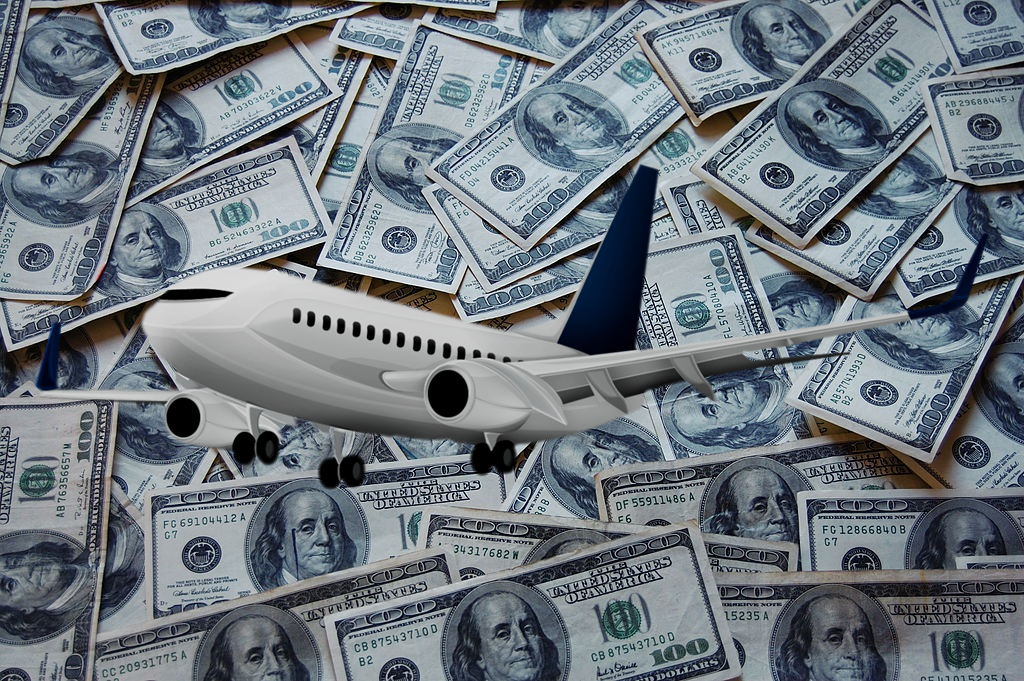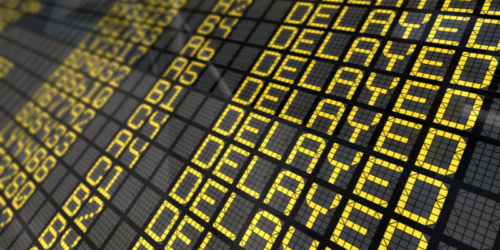Cash is king during COVID-19

The survivability of airlines during COVID-19, or any crisis, comes down to cash flow. Airlines, like most businesses, depend on a consistent flow of cash to survive. This cash flow starts well in advance of a product being delivered or service being provided. Businesses need access to cash to pay staff, rent buildings, and get raw materials. Strong businesses will have actual cash on hand, while others may need to access credit. Either way, there has to be cash flow to get a product or service to a customer. It is a well-choreographed dance businesses must do to eventually end with a profit, hopefully. A disruption to this dance can put stress on cash flow and threaten the ability of a business to turn a profit. Businesses plan for small destructions that may affect their cash flow. The stronger a business’s cash flow is, or the more cash on hand, the better it can handle disruptions.
The struggle of many airlines is to get to and stay in a strong cash flow position without depending too heavily on credit. Take a look at the net margins of Canada’s two largest airlines below for the 9 months ending September 30th, 2019. I am using the first 9 months of 2019 as WestJet becomes private in late 2019 and no longer publishes financial results. Also, these financial results are well in advance of any COVID-19.
This means in the first 9 months of 2019 for every dollar Air Canada brought in, it only made about $0.09. WestJet was making about $0.05 for every dollar of revenue.
Take a look at some of the largest US-based airline net margins for Q3 of 2019.3
- Delta Airlines 10.12%
- Southwest Airlines 10.90%
- Alaskan Airlines 7.09%
- American Airlines 3.52%
- United Airlines 6.60%
- JetBlue 7.20%
- Spirit 9.29%
Higher margins make it easier for airlines to build up their cash on hand and weather disruptions. If an airline went through a rough patch weaker margins could make it harder to recover cash on hand or potentially access credit.
As an example, we can look at the airline with the weakest margin on our list, American Airlines and the airline with the strongest margin, Southwest. American Airlines had about $5.326 billion of cash on hand on September 30th, 2019. With revenue of $11.922 billion from July to September 2019, their cash on hand equalled just over 1 month of operations. Southwest had $4.061 billion in cash on September 30th, 2019. With revenue of $5.369 billion from July to September, their cash on hand equalled just over two months of operations. I am not suggesting having mountains of cash on hand is ideal as cash on its own is not efficient to businesses. I am suggesting airlines with better margins are better positioned to handle disruptions and possibly have better access to credit to secure cash flow.
The effects of COVID-19 began to hit the North American airlines in early February as countries began to impose travel restrictions, followed by domestic restrictions in March. Airlines around the world saw massive drops in demand in a very short time period. Revenue for most airlines essentially dried up, so airlines had to work quickly to reduce their costs. According to the International Air Transport Association (IATA), the average airline had 2 months of cash on hand before the crisis.4 In other words, most airlines would run out of cash in 2 months if they did nothing. Once the cash runs out airlines must seek cash elsewhere, maybe through credit or government support. Airlines can reduce their cash burn by reducing costs, such as suspending flights and reducing staff, but without revenue to cover fixed costs, like rent and aircraft leases, they will eventually run out of cash.
As we are well into the COVID-19 crisis, airlines are trying to plan for the future. US-based airlines received industry-specific support from the US government that would help fund payroll and maintain vital air routes. Most Canadian airlines are taking advantage of general government support for payroll, but more is needed. Airlines need to be in a good position to increase service as demand increases while still maintain basic service during the crisis. The economic impact of any major distribution to Canadian airlines can not be understated. For example, IATA said in 2019 that air transportation in Canada supported 633,000 jobs and contributed USD $49 billion to GDP.5. Hopefully, in the near future, there will be a program for Canadian airlines to stabilize cash flow. This support may come in different forms but should meet the specific needs of the Canadian airline industry. Whatever form it takes, time is running out. Air travel has such an important economic reach in our economy that any inability to recover could have long-lasting negative effects.
The image “plane-over-cash” by Tom Paul a derivative of “Money-Cash” by 2bgr8STOCK used under CC BY 3.0 and “Airplane 14” by Unknown used under CC BY-NC 4.0.
Footnotes
- Source: Air Canada Third Quarter 2019 Interm Unaudited Condensed Consolidated Financial Statements and Notes (https://sedar.com)
- Source: WestJet Airlines Ltd. Third Quarter 2019 Financial Statements and Notes October 28, 2019 (https://sedar.com)
- Source: US-based airline financial data gathered from Macrotrends on April 29, 2020 (https://www.macrotrends.net/)
- Source: COVID-19 Airlines Liquidity Crisis, IATA, (https://www.iata.org/en/iata-repository/publications/economic-reports/covid-19-airlines-liquidity-crisis/)
- Source: The Importance of Air Transport to Canada, IATA (https://www.iata.org/en/iata-repository/publications/economic-reports/canada–value-of-aviation/)





